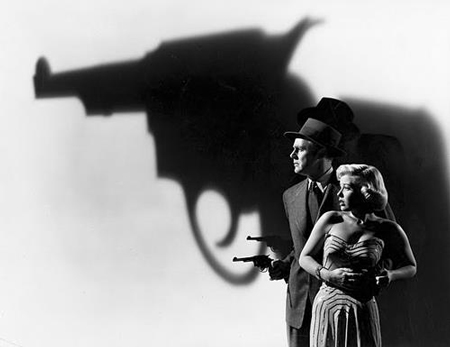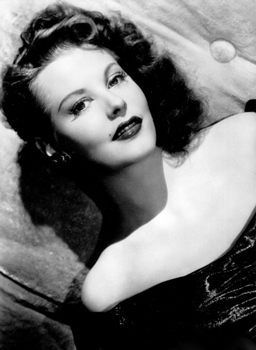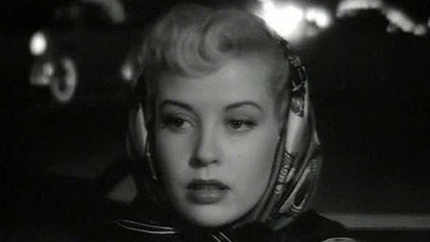
 |
|
|
|
When Dore Schary came to MGM he tried to broaden the reach of the studio's projects, which in plain terms means that he steered the production slate away from Louis B. Mayer's sanitized version of reality, to his own idea of 'relevant' message films. Schary's social comment pictures did not catch on in a big way, but he did bring a darker 'noir' sensibility to the studio's crime thrillers. In 1949 he imported Anthony Mann from the Junior League of Eagle-Lion Films and set the director loose on some very tough-minded tales of crime and corruption. Earlier in the same year MGM released Scene of the Crime, a show that can be classified as noir-lite: a hardboiled story softened by the studio's star casting and glamorous "house style." 
John Bartlow Martin's original story bore the title Smashing the Bookie Gang Marauders, which gives an idea of where Scene of the Crime began. Tough cop Mike Conovan (Van Johnson) and his mentor, old Detective Piper (John McIntire) are breaking in their rookie team member C.C. Gordon (Tom Drake). Mike's gorgeous wife Gloria (Arlene Dahl) is unhappy that he risks his life working all night long, when they could be together: her millionaire ex-beau Norrie Lorfield (Tom Helmore) has offered Mike a cushy job in big industry. The slaying of Mike's ex-partner Ed Monigan (G. Pat Collins) puts our hero into vengeance mode, but the underworld offers few clues. It's suspected that Monigan was on the take from bookie parlors, to protect them from thugs muscling in from down-state. Citing the $1,000.00 found in Monigan's pockets, the muckraking columnist Bob Herkimer (Donald Woods) smears the dead man in print. Looking for the two out-of-town killers, Mike threatens various lowlife-types and receives a good tip from a snitch named Squealer (Norman Lloyd). The steer leads him to the Fol-De-Rol Club and its headliner, stripper Lili (Gloria DeHaven). Mike asks LIli out and impresses her with his chaste manner. She volunteers to tell Mike if the leading suspect Turk Kingby (Richard Benedict) shows up. Meanwhile, C.C. and Piper bug another hoodlum to get hard evidence about the bad guys. Just as Mike is getting close, everything blows up. Assassins try to murder him. Worse, Gloria decides to leave, convinced that she's incompatible with Mike's profession. Scene of the Crime is an entertaining cop show that will appeal to fans of its stars, most of whom made their debuts a few years earlier during the war. The MGM studio's well-oiled factory turned out fine entertainments, but its uniform (homogenized) technical standards tended to neuter movies that begged for a more daring approach. Scene of the Crime is an authentic noir in that its main cop character works in a moral twilight zone. Mike Conovan not only misrepresents his intentions to a woman to get information, he threatens witnesses and stoolies at will to get what he wants. The story's basic premise is based on an all-too familiar contradiction about honor and ethics in police work. Mike is incensed that his ex-partner has been accused of being a dirty cop after being gunned down in the street. But the entire force appears to allow an organized crime syndicate (the system of bookie joints) to operate unmolested. They only get involved when outside thugs try to move in on the home turf. What gives? Charles Schnee's screenplay hasn't time to investigate this state of affairs; as this is an MGM movie at the height of the blacklist years, nobody's talking about systemic problems or the fact that corruption is part of the status quo. Instead, the finish gives us a very non-noir dialogue line to the effect that all the bad guys are being rounded up. That's swell - no more illegal betting in Los Angeles. 
MGM glamour and sentiment fill the vacuum left by Scene of the Crime's avoidance of a social context. Van Johnson's performance can't be faulted, yet his pretty-boy image works against a convincing hardboiled atmosphere. To make Johnson look tougher, he's given an even more baby-faced sidekick in Tom Drake, a good actor best known as Judy Garland's 'The Boy Next Door' from Meet Me in St. Louis. John McIntire is seemingly in the show to provide a sentimental angle, when his failing eyesight hampers the team's work. He of course decides to atone by breaking his own first rule of cop work: never go against the bad guys without back-up. The script is packed with hardboiled tough talk and cop jargon that never sounds quite right; Charles Schnee wrote some classic pics (and a couple of superior noirs) but he hasn't an ear for Raymond Chandler-like patter. The only actor that gets away with it -- and steals the movie as well -- is the great Norman Lloyd. His slimy informer Sleeper is genuinely eccentric, and peppers his dialogue with nutso touches, like ending most sentences with a squeaky "Yuk Yuk!" When not on a special project, MGM's technicians and art people reverted to the studio's efficient standards, which gives Scene of the Crime a clean look devoid of the stylization that might accentuate its darker content. A few sets display shadows of Venetian blinds on the walls, but even the crooks' hangouts are roomy, clean, and well lit. The exception is the downtown streets, seen mostly from moving cars. Norman Lloyd gets a nice introductory shot leaning on a lamppost on a grimy corner. But star Van Johnson is always watching from a car in a rear-projection process stage back in Culver City. Whenever he hits the sidewalk, it's always on MGM's impressive back-lot city sets (appropriately hosed down, of course). Where's the glamour? Mike's drop-dead-gorgeous wife back home sits waiting for him all night, beautifully dressed and made up, with nary a hair out of place. All this so the unjustly overlooked Arlene Dahl (good MGM roles went elsewhere) can mope about her Mikey leaving for work every time they start to kiss. When the Conovans go out, Mike wears a tux and they frequent ritzy nightclubs. Yes, the rich Norrie Lorfield is paying, but Mike and Gloria seem right at home. Go look at the real L.A. detectives at the time -- even the handsome ones have draggy faces and bags under their eyes. Many are bachelor-loners. If they're lucky, the married ones see their little women for coffee maybe once a day. The MGM brass were surely trying to keep their expensive stable of contract players working. Gloria DeHaven's niche in the glamour factory really dried up when she was no longer needed to pair off with June Allyson in college musicals. Scene of the Crime gives her a Lana Turner-like role as a stripper who sleeps around. The other backup dancer in the Fol-De-Rol Club is practically middle-aged and chubby, a commendable stab at authenticity. Powdered and primped, DeHaven steps on stage like a bon-bon untouched by human hands, and does a tease dance where absolutely nothing comes off and nobody is titillated. Rita Hayworth she's not, but that's not a fair complaint. Ms. DeHaven's every pore exudes the squeaky-clean MGM image. Other noirs featuring 'specialty dancers' offered genuinely hot actresses, like Adele Jergens in Armored Car Robbery. Jergens seemed real even though the censors limited what could be shown on stage. But this being MGM, nobody could resist a song. DeHaven pouts and sulks and tries to act trashy, but it doesn't wash. Another case of glamour undermining the storyline. 
Scene of the Crime has a fringe benefit in its long list of tough-guy characters and bits. Donald Woods is a ruthless columnist, Jerome Cowan a shady lawyer, and Leon Ames is Mike's superior (who we really expect to discover is on the bookies' payroll). Main bad guy Richard Benedict would later play the man trapped in the cave in Billy Wilder's Ace in the Hole. Familiar face William Phipps gets a nice scene as a punk who sold the killer his murder weapon. One of the faces on camera for just a few seconds is Jeff Corey, who communicates an entire lifestyle just by standing still as Mike Conovan pulls a switchblade out of his pocket. We're told that Scene of the Crime pulled its weight and more at the box office. Roy Roland's direction is fairly invisible and lacks the edge that the new talent would be bringing to MGM's genre films -- not only Anthony Mann, but Richard Brooks, John Berry, and John Sturges. The next year John Huston would blow them all away with his superior The Asphalt Jungle, a show that transcends crime thriller and noir stylistics to make an even bigger statement. 
The Warner Film Noir Archive Collection DVD-R of Scene of the Crime is in perfect shape in all respects, giving us the full benefit of Paul Vogel's B&W cinematography. Although both leading ladies were made for Technicolor, the monochrome images flatter Arlene Dahl and Gloria De Haven. A trailer is included that opens up a couple of music-related questions. I remember noting that six years later, the trailer for Forbidden Planet was scored with the main theme from Bad Day at Black Rock ... but the same martial theme or something close to it shows up on this 1949 trailer. In the film's best action scene, Van Johnson accidentally turns on a radio in Turk Kingby's room, starting a big fight 'backed' by the music from the radio. The swing piece sounds very much like the cue used a year later for the juke girl's dance in the roadhouse at the conclusion of The Asphalt Jungle. Where did these two very distinctive cues really originate? Are they part of the score by André Previn?
On a scale of Excellent, Good, Fair, and Poor,
Scene of the Crime rates:
Reviews on the Savant main site have additional credits information and are often updated and annotated with reader input and graphics. Also, don't forget the 2011 Savant Wish List. T'was Ever Thus.
Review Staff | About DVD Talk | Newsletter Subscribe | Join DVD Talk Forum |
| ||||||||||||||||||